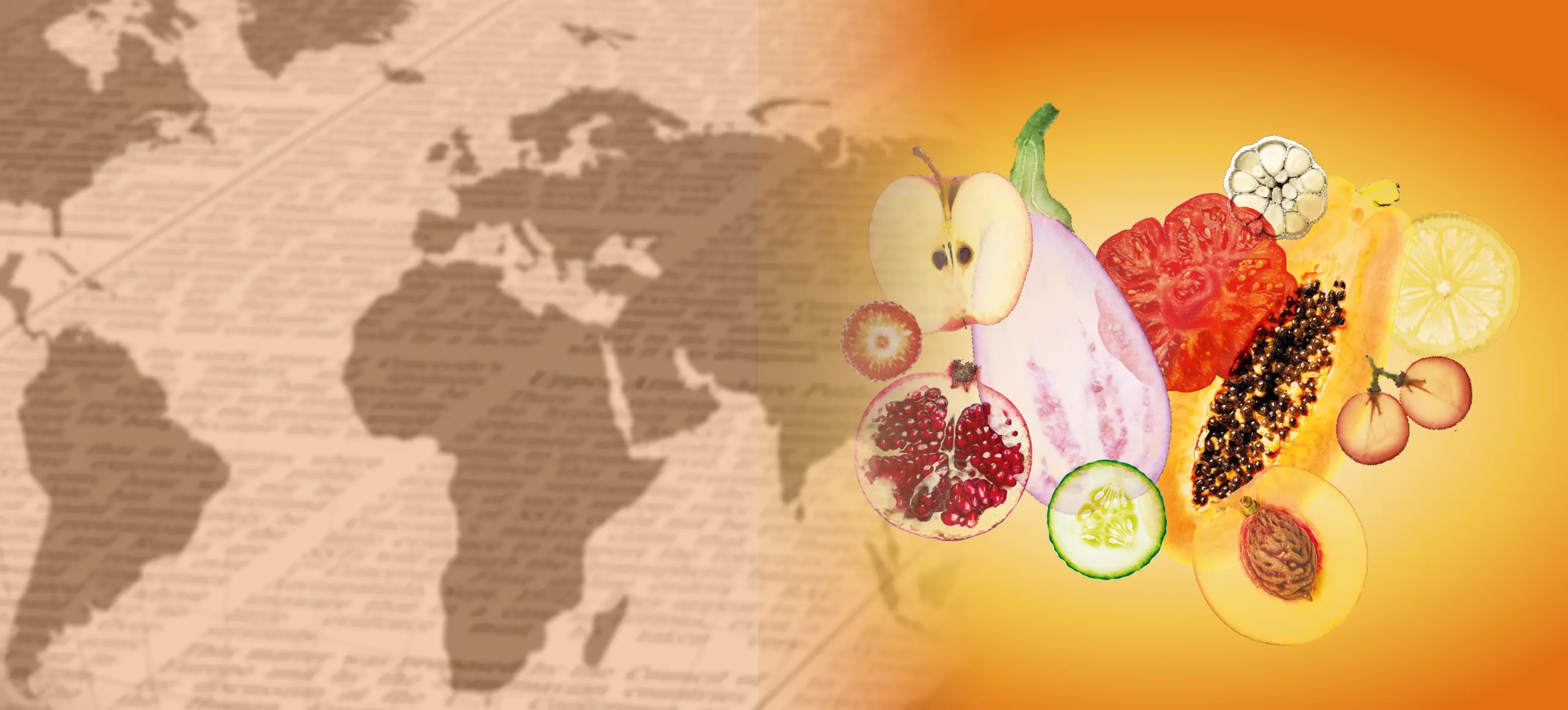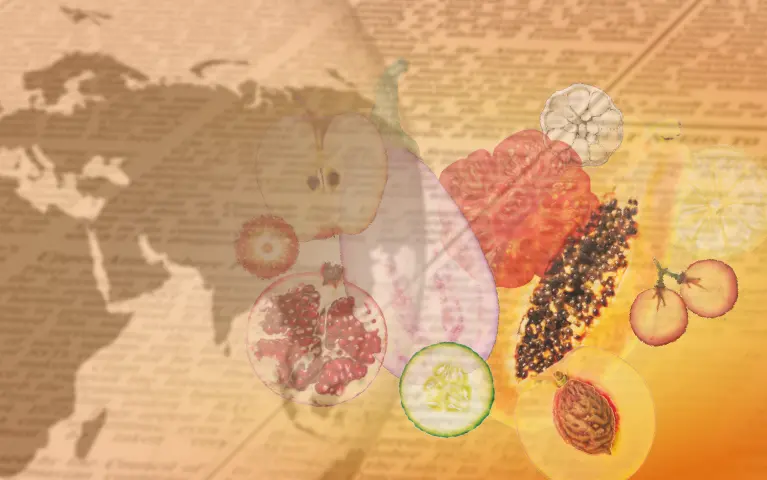

What is food security in Europe and why is the fruit and vegetable sector key?
Discover what food safety is, how it is measured, and why the fruit and vegetable sector plays a key role in ensuring safe, high-quality food.
What is food security in Europe?
Definition and objectives of food security
Food safety encompasses the set of standards, procedures and controls that ensure that food reaching consumers is safe, nutritious and accurately labelled. Its main objective is to protect public health by preventing poisoning, outbreaks and the presence of physical, chemical or microbiological contaminants in the food chain.
This requires monitoring from primary production to distribution and the point of sale (the approach known as ‘From Farm to Fork’) with tools such as risk analysis, traceability and rapid recall systems. Beyond minimising health risks, food safety protects consumer rights, strengthens market confidence and facilitates intra-Community trade.
Its effectiveness depends on adequate resources, ongoing training, clear communication with the public and external, independent oversight, all of which are essential for anticipating and managing new and emerging hazards, such as antimicrobial resistance and the effects of climate change.
Legal and regulatory framework in the European Union
In the European Union, the legal framework for food safety revolves around Regulation (EC) No 178/2002, which defines principles and responsibilities, establishes the European Food Safety Authority (EFSA) and places risk analysis at the heart of public decision-making. This regulation requires operators to guarantee safety and traceability, provides for the withdrawal and labelling of products, and establishes the Rapid Alert System for Food and Feed (RASFF).
The Commission issues directly applicable rules and coordinates border controls for imports; Member States carry out inspections, sanctions and surveillance programmes. In Spain, the Spanish Food Safety and Nutrition Agency (AESAN) coordinates actions and publishes technical guides. The precautionary principle allows for provisional measures in the face of scientific uncertainty, and the EFSA provides technical opinions to guide risk management.
How is food security measured?
Key indicators for assessing food security
Measuring food safety requires indicators that combine epidemiological data, control results and early warning signs in the supply chain. Among the most relevant are the incidence of foodborne diseases (outbreaks and reported cases), the number and severity of alerts reported to the RASFF system, and the results of official sampling for chemical contaminants—pesticides, mycotoxins, microbiological hazards, etc.
Trends in food-related antimicrobial resistance, the proportion of official controls with non-conformities, border rejections, and the speed of withdrawal procedures and communication to the public also have an influence. Laboratory indicators and traceability metrics complete the picture. Temporal comparison and interconnection of data between authorities, laboratories and public health services are essential for prioritising preventive measures and maintaining public confidence. Transparency in data publication and cross-border collaboration are therefore essential.
Factors influencing European food security
European food security is influenced by a combination of structural, environmental and economic factors:
The globalisation of supply chains and factors such as tariffs.
Logistical complexity.
Pressure to reduce costs.
Climate variability that alters the occurrence of pests or mycotoxins.
Antimicrobial resistance.
In Spain, the fruit and vegetable sector has shown leadership: for example, numerous farms in the Mediterranean arc have implemented integrated production systems and GlobalG.A.P. certifications, achieving very low levels of pesticide residues; likewise, cooperatives in Murcia and Almería have invested in digital traceability and their own laboratories that allow early detection of microbiological contaminants. Initiatives in Catalonia are also noteworthy, where producers have collaborated with universities to develop varieties that are more resistant to water stress, reducing the need for pesticides.
At the institutional level, AESAN and the autonomous communities have strengthened official controls and audits in the field and in packaging, ensuring regulatory compliance. These efforts, supported by innovation, training and public-private collaboration, allow Spanish fruit and vegetable products to enjoy great confidence among both domestic consumers and export markets, contributing to mitigating risks and ultimately strengthening food safety.
The role of the fruit and vegetable sector in food security
Contribution of fruit and vegetables to food security
Fruits and vegetables are more than just a component of the diet: they are one of the pillars of food security, ensuring the supply of vitamins, minerals, fibre and water that sustain population health and reduce vulnerability to nutritional deficiencies. Regular consumption helps prevent chronic diseases and maintains the nutritional quality of daily rations, which is why the availability, safety and accessibility of these products are crucial to food security.
At the same time, many horticultural products are consumed fresh, without thermal processes to eliminate microorganisms, which requires specific controls in the field, post-harvest and distribution to avoid microbiological and chemical risks. In Spain, the strength of the fruit and vegetable sector, with production and exports that sustain national and European markets, reinforces the country's capacity to contribute volume and diversity to the EU supply.
Examples of key products and their impact
In the Spanish fruit and vegetable sector, there are products that have a dual effect: they provide nutrients and sustain critical supply chains. Tomatoes, peppers, strawberries, oranges, cucumbers and lettuce are examples of products that contribute to healthy diets and, at the same time, represent a significant portion of Spanish exports, which are key to the security of European markets.
The commercial survival of these vegetables requires impeccable logistics—pre-cooling, cold chain and traceability—to maintain safety and shelf life; practices that companies and cooperatives apply with visible results in quality and reduction of rejections at destination. Specific initiatives, such as the use of pre-cooling in the field by fruit and vegetable companies in Murcia/Alicante and the digitisation of field notebooks to improve traceability and planning, are real examples that improve food safety by reducing losses and speeding up the response to alerts. The commercial strength of the sector and these practices converge to increase both availability and consumer confidence.
Adaptation to climate change
Global warming, the proliferation of heat waves and occasional water shortages are reshaping food security risks and forcing the fruit and vegetable sector to adapt without sacrificing safety or quality. The response in Spain combines genetic research, water management and digitalisation: varietal improvement programmes and genetic collections seeking peppers and other crops that are more tolerant to high temperatures and water stress, modernised irrigation infrastructure and projects for desalination and reuse of water for irrigation, and the incorporation of sensors and climate control in greenhouses to maintain safe production conditions.
Spanish research projects and centres are already promoting genetic materials and demonstrators that promise to reduce dependence on inputs and protect yields, while mitigating health risks associated with abiotic stress and new pests. Integrating these solutions with EU risk management frameworks is an opportunity to strengthen resilience and preserve food security in the medium term.
Reducing food waste
Reducing waste in fruit and vegetables directly improves food security: more usable food available and less loss of resources that sustain production. In Spain, there are positive signs: official reports and European projects are promoting reductions and concrete solutions, from improvements in post-harvest and packaging to digital tools that predict shelf life and optimise logistics, reducing both economic losses and health risks linked to spoiled products.
A notable example is a consortium led by the Polytechnic University of Cartagena that is developing technologies (solar chambers, edible coatings, AI to monitor shelf life) to reduce waste in tomatoes and peppers in Mediterranean environments by up to 40%; at the same time, cooperatives and companies are promoting organised donation and the recovery of by-products for more circular chains.
All these practices, when accompanied by official control and transparency, increase the availability of fruit and vegetables and minimise critical points in the chain.






